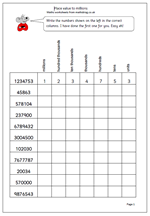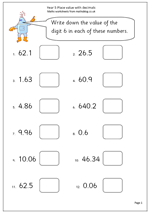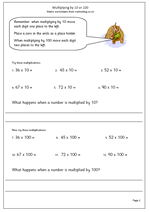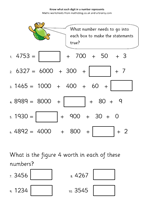 Many children find reading large numbers very difficult, as indeed do many adults. This is a very simple page which looks at reading larger numbers up to millions. If nothing else it should help children realise that they need to start with hundreds tens and units and the the next three columns are then repeated but in thousands. A common error is to start trying to read a very large number from the largest digit when this can often just be a guess.
Many children find reading large numbers very difficult, as indeed do many adults. This is a very simple page which looks at reading larger numbers up to millions. If nothing else it should help children realise that they need to start with hundreds tens and units and the the next three columns are then repeated but in thousands. A common error is to start trying to read a very large number from the largest digit when this can often just be a guess.
Working in blocks of three:
123 456 789
789 hundreds tens units
456 hundreds tens units of thousands
123 hundreds tens units of millions
so the number is 123 million 456 thousand and 789.
Easy!


